Homedics BPW-1000-EU Handleiding
Homedics
Bloeddrukmeter
BPW-1000-EU
Bekijk gratis de handleiding van Homedics BPW-1000-EU (16 pagina’s), behorend tot de categorie Bloeddrukmeter. Deze gids werd als nuttig beoordeeld door 46 mensen en kreeg gemiddeld 5.0 sterren uit 23.5 reviews. Heb je een vraag over Homedics BPW-1000-EU of wil je andere gebruikers van dit product iets vragen? Stel een vraag
Pagina 1/16

GB
Instruction Manual
BPW-1000-EU
Blood Pressure Monitor

2
GB
HOMEDICS BLOOD PRESSURE MONITOR
Before use
Before the blood pressure monitor is taken into use a number of basic steps should be
observed. Please read this manual thoroughly before the blood pressure monitor is used
for the first time and keep the manual for future use.
The blood pressure monitor is intended for home use only. Any measurement is solely
for your information and can under no circumstances replace a visit to the doctor. The
blood pressure measurements should always be assessed by a qualified person (a
doctor, nurse or similar) who is familiar with the user’s general medical condition. By
regular use and by keeping a record of the results, this person can be kept well informed
about developments in the user’s blood pressure. Measurements must never be
interpreted by the user with the aim of changing levels in the use of medicine as
prescribed by a doctor, but the doctor’s instructions must be followed AT ALL TIMES.
Use of appropriate cuff size is crucial to correct measurement. Follow the instructions
presented in this manual and printed on the cuff to ensure that the correct cuff size is
used.
The blood pressure monitor is not suited for users who suffer from arrhythmia (heart
rhythm disturbances) and errors may occur in the measurement results if the user has
suffered a stroke, suffers from cardiovascular diseases, has a very low blood pressure, or
suffers from other symptoms such as circulatory diseases (diabetes, kidney diseases,
arterial sclerosis (deposits in the arteries), or poor peripheral blood circulation (e.g. in
hands and feet).
Electromagnetic disturbances: The device contains sensitive electronic components.
Keep it clear of strong electric or electromagnetic fields in the immediate surroundings
(e.g. mobile telephones, microwave ovens) as these may temporarily reduce
measurement accuracy.
Use the blood pressure monitor only for its original purpose.
The device is intended for measurement of blood pressure and pulse with adult persons.
Do not apply the monitor to infants nor to persons who cannot express their permission.
The device must not be operated by children.
The blood pressure monitor functions in accordance with the oscillometric
measurement principle. These blood pressure changes are measured in the cuff on the
basis of the arm pulse and are converted into a numerical value of the current blood
pressure. Simultaneously, the number of pulse beats are registered and calculated as
number of pulse beats per minute.
There are two kinds of discernible blood pressures. Both are expressed in mmHg
(millimetres on the mercury column): The systolic and the diastolic. The systolic (‘the
high blood pressure’) states the pressure when the heart chambers contract to send
blood through your body, and the diastolic (‘the low blood pressure’) states the pressure
when the heart is at ease and filling with blood before the next muscle contraction. The

3
GB
connection between values (mmHg) is expressed as e.g. 130 over 85 which means that
the systolic pressure is 130 and the diastolic pressure is 85.
Why is it important to keep an eye on your blood pressure?
Many of today’s most common diseases are connected to hypertension , also referred to
as ‘high blood pressure’. Hypertension is closely connected to cardiovascular diseases,
and for people in the danger zone the blood pressure provides an important tool to
keep an eye on the development.
What are systolic pressure and
diastolic pressure?
When ventricles contract and pump
blood out of the heart, blood pressure
reaches its maximum value, the highest
pressure in the cycle is known as systolic
pressure. When the heart relaxes
between heartbeats, the lowest blood
pressure is diastolic pressure.
What is the standard blood
pressure classification?
Below illustrates the blood pressure
classification mode by World Health
Organization (WHO) and International
Society of Hypertension(ISH) in 1999.
Systolic Diastolic
artery
press relax
vein
blood discharging blood entering
SYS <120 120~129 130~139 140~159 160~179 >180
DIA <80 80~84 85~89 90~99 100~109 >110
Level
Blood
Pressure
(mmHg)
Optimal Normal High-normal Mild Moderate Severe
CAUTION
Only a physician/GP can tell you your normal blood pressure range and the point at
which you are at risk. Consult your physician to obtain these values. If the
measurements taken with this product fall outside the range, consult your physician/GP.
Hypo Norm. Norm. G1 G2
G3
Product specificaties
| Merk: | Homedics |
| Categorie: | Bloeddrukmeter |
| Model: | BPW-1000-EU |
| Soort: | Automatisch |
| Ondersteuning voor plaatsing: | Pols |
| Ondersteund aantal accu's/batterijen: | 2 |
| Memory-functie: | Ja |
| Pulse rate meting: | Ja |
| Diastolische bloeddruk: | Ja |
| Systolische bloeddruk: | Ja |
| Datum afdrukken: | Ja |
| Mean slagaderlijke druk: | Ja |
| Type batterij: | AAA |
Heb je hulp nodig?
Als je hulp nodig hebt met Homedics BPW-1000-EU stel dan hieronder een vraag en andere gebruikers zullen je antwoorden
Handleiding Bloeddrukmeter Homedics

3 Juli 2023

2 Juli 2023

24 Juni 2023

24 Juni 2023

22 Juni 2023

19 Juni 2023

17 Juni 2023

17 Juni 2023

15 Juni 2023

15 Juni 2023
Handleiding Bloeddrukmeter
- Gima
- Nokia
- Rossmax
- Geratherm
- Sencor
- Sanotec
- Nedis
- Magic Care
- Oromed
- Promed
- Duronic
- Citizen
- Sendo
- Terraillon
- Kogan
Nieuwste handleidingen voor Bloeddrukmeter
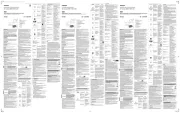
1 September 2025
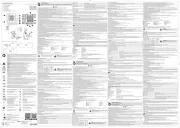
25 Augustus 2025
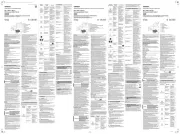
29 Juli 2025
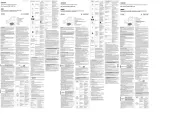
28 Juli 2025
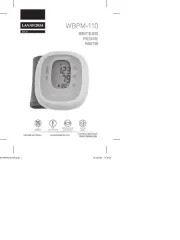
16 Juli 2025
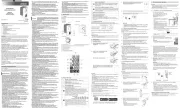
23 Mei 2025
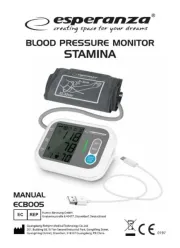
22 Mei 2025
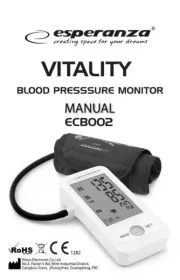
22 Mei 2025
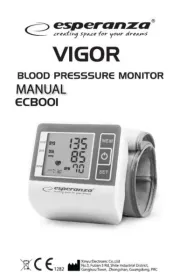
22 Mei 2025
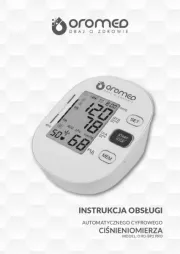
20 Mei 2025